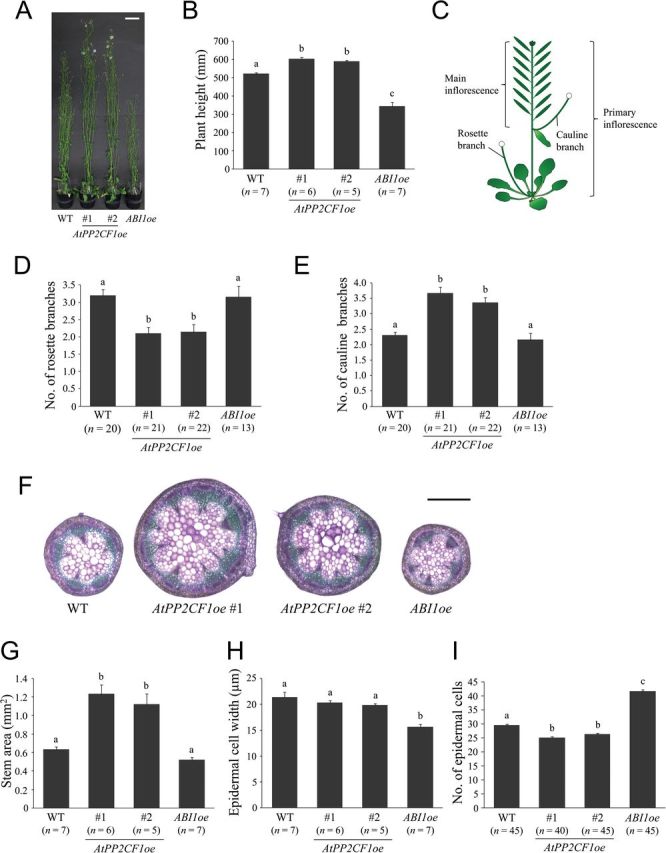Fig. 5.

AtPP2CF1oe plants exhibited increased inflorescence stem growth. (A) Nine-week-old wild-type (WT), AtPP2CF1oe (#1 and #2), and ABI1oe plants. (B) Height of 9-week-old plants. (C) Schematic representation of Arabidopsis inflorescence stems. (D, E) Number of rosette branches (D) and cauline branches on primary inflorescence (E). Arabidopsis plants grown until global proliferative arrest stage (Hensel et al., 1994) were used for measurements. Short, thin rosette branches <10cm in length, which occurred infrequently, were excluded from the counts. (F–I) Basal parts (20mm from the rosette base) of primary inflorescence stems in 9-week-old plants were used for observations and measurements. (F) Transverse primary inflorescence stem sections from WT, AtPP2CF1oe, and ABI1oe plants. Sections were 100-μm thick and stained with toluidine blue. (G–I) Stem area (G) and epidermal cell width (H) and number (I). Stem epidermal cell width was determined as the stem circumference divided by the epidermal cell number in transverse stem sections. The number of epidermal cells (not including guard cells) per unit stem epidermal area (1mm long and 100 μm wide) was counted (see also Supplementary Fig. S9). Scale bars: 50mm (A); 500 μm (F). All values represent the mean ± SE. Different letters above bars indicate statistically significant differences between the lines, assessed by one-way ANOVA with Tukey-Kramer multiple comparison tests at P < 0.05 (B, D) and P < 0.01 (E, G–I).
